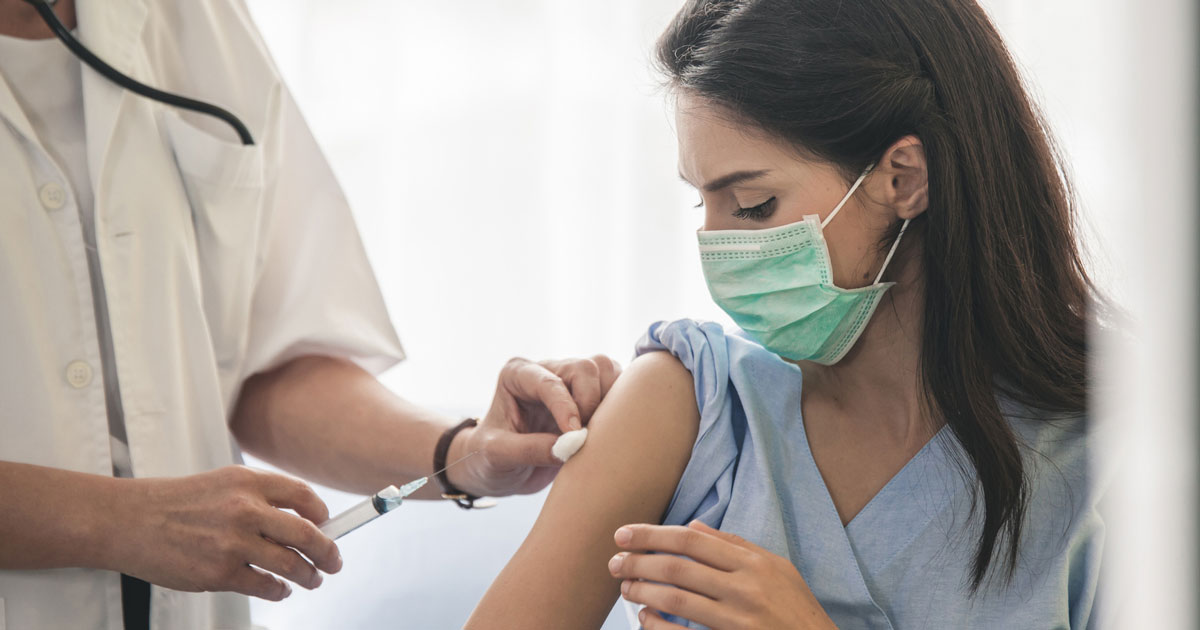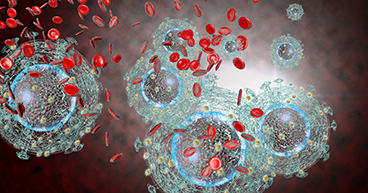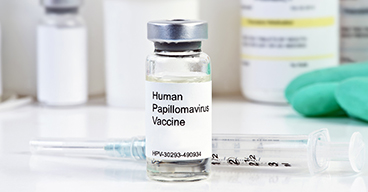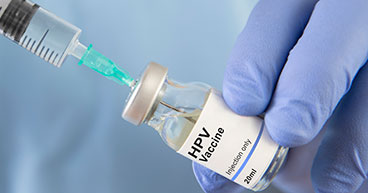
Even before the global pandemic upended preventative medical care, the number of American adolescents and young adults vaccinated against the human papillomavirus (HPV) was well below the national goal of 80 percent, a figure set by the Office of Disease Prevention and Health Promotion, part of the U.S. Department of Health and Human Services.
According to the U.S. Centers for Disease Control and Prevention (CDC), in 2020, 59 percent of American adolescents (ages 13-17) had been fully inoculated against the cancer-causing virus.
Religious, cultural, economic and geographical factors and a growing mistrust of vaccines exacerbated by the COVID-19 pandemic are among some of the reasons why HPV vaccine rates may lag behind traditional recommended childhood vaccines, such as polio, measles, mumps and rubella, all of which exceed 90 percent compliance, according to the CDC. The current recommended two-dose protocol may also contribute to the low levels of vaccination, since not all patients return for the second dose. According to the CDC, 75 percent of U.S. adolescents in 2020 received just one dose.
But will research prove that one dose soon may be enough? In this blog, we’ll explore:
- What is HPV and how does it cause cancer?
- New research on HPV vaccine dosing
- What should parents do?
- The pandemic’s impact on vaccinations
- Vaccine inequities worldwide
If you’ve been diagnosed with cancer and are interested in learning more about our treatment options at CTCA®, or if you’re interested in a second opinion about your cancer diagnosis and treatment plan, call us or chat online with a member of our team.
How does HPV cause cancer?
HPV is a family of more than 200 known subtypes— the most common sexually transmitted virus in the United States, spread during vaginal, anal or oral sex.
Most people who are sexually active will be infected by the virus in their lifetime, and many never know it. Many versions of HPV are relatively benign and don’t cause symptoms or disease. Some versions of the virus may cause genital warts. Most do not cause cancer.
But some versions of the virus are more aggressive than others when they infect cells. They may interrupt critical signals that regulate cell growth and division and eventually alter the cells’ DNA. These changes may turn the cells cancerous, causing them to grow out of control. Research indicates it may take up to 20 years for HPV-infected cells to form a tumor.
According to the National Cancer Institute, HPV is responsible for:
- Nearly all cases of cervical cancer
- 70 percent of throat cancers
- More than 90 percent of anal cancers
- More than 60 percent of penile cancers
- 75 percent of vaginal cancers
- 70 percent of vulval cancers
New research on vaccine dosing
Emerging research is showing that a single dose may provide the same level of protection as the currently recommended two doses—a potential game-changer in drastically reducing HPV-associated cancers, says Ruchi Garg, MD, Gynecologic Oncology Enterprise Chair at CTCA and Gynecologic Oncologist at CTCA Atlanta.
In April, after evaluating years of data from research conducted in different parts of the world, an advisory group of the World Health Organization (WHO) concluded that a single dose of the HPV vaccine is just as effective as two or even three doses in the prevention of cervical cancer. WHO’s Strategic Advisory Group of Experts on Immunization, known by the acronym SAGE, made the preliminary recommendation, but WHO will issue a final decision, likely in 2023, according to Dr. Garg.
“It’s not the protocol in the United States yet, but it’s potentially the direction we’re going,” she says.
In April, the New England Journal of Medicine published the results of a single-dose HPV trial in Kenya, finding that a single dose of either of the two HPV vaccines “provided 97.5 percent protection against new persistent infections with HPV 16 and 18, the two types that cause about 70 percent of all cervical cancers,” according to Luanne Barnabas, MD, Ph.D., the chief of infectious diseases at Massachusetts General Hospital and the Kenyan study’s principal investigator. Studies in Costa Rica and India yielded similar findings.
What should parents do?
Despite the new research, the CDC dosing recommendations for the HPV vaccine for American adolescents and young adults have not changed. And with good reason. Research is still developing, and time will tell if a one-dose protocol remains effective. Also, what works in one part of the world and in one population may not work in another. Environmental and genetic differences need to be considered.
“The data for studies needs to mature, and some data needs to occur in the U.S. population because the population is different here as it pertains to genetic makeup and reactivity,” Dr. Garg says. “We’ve learned from cancer studies that different populations, due to genetic and molecular makeups, respond differently.”
For now, the CDC guidelines say:
- Children and young adults up to 26 years old should be vaccinated.
- The vaccine should be part of a routine vaccination for boys and girls ages 11 and 12.
- The vaccine should be given as a series of either two or three doses, depending on the person’s age at initial vaccination.
- Adults ages 27 through 45 should talk to their doctor about the vaccine if they were not vaccinated younger.
The vaccine prevents HPV infections, but it doesn’t treat them. That’s why it’s best to get the vaccine before becoming sexually active. If you’re already active, but haven’t had the vaccine, it’ll help prevent infection from strains of the HPV virus you haven’t yet been exposed to.
The pandemic’s impact on vaccinations
Vaccinations for all diseases fell dramatically during the height of the COVID-10 pandemic. WHO estimates that 23 million children worldwide missed basic vaccines in 2020. In a sweeping study of eight major U.S. health systems, researchers “observed substantial and persistent disruptions to routine infant, childhood, and adolescent vaccine delivery following the start of the COVID-19 pandemic.”
HPV vaccinations were no exception.
In May 2021, the journal Vaccine published the results of an analysis to assess the long-term ramifications of the drop in HPV vaccination rates during the pandemic. The study’s authors cautioned that, “if teens didn’t get brought up to date, hundreds of thousands of new cases would result.”
According to the analysis, the gap in vaccines may result in thousands of new cases of genital warts and cervical disease, including cancer, in coming decades.
“The model demonstrates how the impact of the disruption caused by COVID-19 reaches far beyond this disease, as its impact on HPV vaccination has the potential to slow progress made in recent years toward the goal of eliminating cervical cancer,” the authors noted.
Worldwide vaccine inequities
While some nations struggle to make the vaccine more widely available, other nations are surging ahead with vaccination programs that are expected to reap benefits in the decades to come.
As part of its Cervical Cancer Elimination Initiative, WHO is aiming for 90 percent of girls worldwide to be fully vaccinated with the HPV vaccine by the age of 15. It has a long way to go.
According to the organization, just 13 percent of girls worldwide have received the current two-dose protocol. In many poorer nations, the vaccine is either not available or too expensive, and awareness of the benefits of vaccines are low.
In a wealthy and developed nation like the United States, the greatest hurdle to wiping out HPV is patient compliance. The vaccine is widely available, but a segment of the population chooses not to have their children receive it. Dr. Garg says Americans have an opportunity to learn from places like Australia and the United Kingdom (UK).
“Australia is going to wipe out cervical cancer on their continent,” Dr. Garg says. “And in the UK, they started vaccinating 12- and 13-year-olds, and when they did follow-ups, they didn’t see any cervical cancers in that population. This vaccine is so effective. How exciting and how amazing that we have a vaccine that can prevent cancer. There are not too many times in our lifetime that we see something like this.”
If you’ve been diagnosed with cancer and are interested in learning more about our treatment options at CTCA, or if you’re interested in a second opinion about your cancer diagnosis and treatment plan, call us or chat online with a member of our team.



